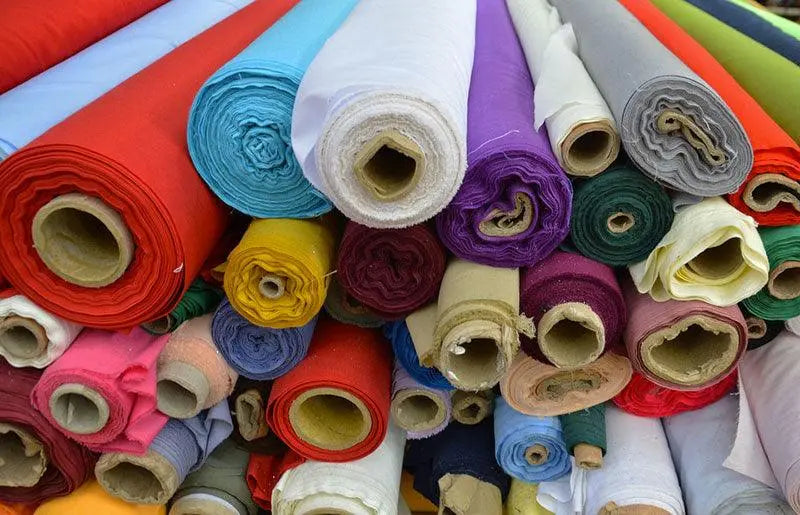Types of cotton
Types of cotton available on the market. Cotton is one of the most widely used fabrics in the world, prized for its softness, breathability, and versatility. But did you know that there are different varieties of cotton, each with its own unique characteristics? In this article, we'll explore the main types of cotton available on the market, helping you choose the fabric that best suits your needs.
1. Egyptian Cotton
Characteristics of Egyptian Cotton
Egyptian cotton is often considered the king of cottons. Grown along the banks of the Nile, this cotton is famous for its long, silky fibers. Long fibers allow for the production of finer yarns, resulting in extremely soft and durable fabrics.
Benefits of Egyptian Cotton
- Softness : Egyptian cotton is incredibly soft to the touch, making it ideal for luxury sheets and apparel.
- Durability : Thanks to its long fibres, this cotton is very resistant and maintains its quality over time.
- Breathability : Excellent for its ability to circulate air, keeping you cool and dry.
2. Pima cotton
Characteristics of Pima Cotton
Pima cotton is another high-quality cotton variety, grown primarily in the United States, Australia, and Peru. Similar to Egyptian cotton, Pima has long, smooth fibers that produce soft, durable fabrics.
Benefits of Pima Cotton
- Softness and Luster : Pima cotton is known for its softness and a natural luster that gives it an elegant look.
- Resistance : The long fibres make Pima cotton extremely resistant to wear and frequent washing.
- Vibrant Colors : This type of cotton absorbs colors well, keeping them vibrant even after many washes.
3. Supima Cotton
Characteristics of Supima Cotton
Supima cotton is a superior version of Pima cotton, grown exclusively in the United States. "Supima" is a combination of "superior" and "Pima," indicating the superior quality of this cotton.
Benefits of Supima Cotton
- Exceptional Softness : Even softer than Pima cotton, Supima offers a luxurious, comfortable feel.
- Incredible Durability : Supima's long, strong fibers make it one of the longest-lasting cottons available.
- Color Retention : Retains bright colors longer than other types of cotton.
4. Organic Cotton
Characteristics of Organic Cotton
Organic cotton is grown without the use of chemical pesticides, synthetic fertilizers, or genetically modified organisms (GMOs). This type of cotton is produced using methods that support environmental sustainability and farmer health.
Benefits of Organic Cotton
- Sustainability : Organic cotton production has a lower environmental impact than conventional cotton.
- Safety : Without the use of harmful chemicals, organic cotton is safer for the skin, especially for those with sensitivities or allergies.
- Quality : While not always as soft as Egyptian or Pima cotton, organic cotton can still be of high quality.
5. Upland Cotton
Characteristics of Upland Cotton
Upland cotton is the most commonly grown cotton in the world, accounting for approximately 90% of global cotton production. It has shorter fibers than Egyptian or Pima cotton, but is widely used due to its high yield.
Advantages of Upland Cotton
- Affordability : More affordable than other high-quality cotton varieties.
- Versatility : Used in a wide range of products, from jeans to t-shirts and home linens.
- Durability : Even though the fibers are shorter, Upland cotton is still durable enough for many everyday uses.
6. Sea Island Cotton
Characteristics of Sea Island Cotton
Sea Island cotton is one of the rarest and most valuable cotton varieties, grown primarily in the Caribbean. It is known for its extremely long and fine fibers.
Advantages of Sea Island Cotton
- Luxury : Considered one of the most precious cottons in the world, it offers unparalleled softness and quality.
- Durability : The long fibers make it extremely strong and durable.
- Breathability : Excellent breathability, making it ideal for hot and humid climates.
7. Aghfan Cotton
Characteristics of Aghfan Cotton
Aghfan cotton, native to the Middle East, is known for its medium-length fibers. This type of cotton is less common, but is prized for its durability.
Benefits of Aghfan Cotton
- Strength : The medium length fibres make it durable and resistant.
- Cost-Effectiveness : It is generally less expensive than other high-quality cotton varieties.
- Versatility : Used in various textile products, from denim to casual wear.
8. Natural Colored Cotton
Characteristics of Natural Colored Cotton
Naturally dyed cotton is a special variety of cotton that grows in different colors without the use of chemical dyes. It comes in shades such as brown, green, and pink.
Advantages of Natural Colored Cotton
- Sustainability : No dyeing required, reducing environmental impact.
- Safety : Perfect for those with sensitive skin or allergies to dyes.
- Uniqueness : Each batch of cotton may have slight variations in color, making each product unique.
Conclusion
Choosing the right type of cotton depends on your specific needs. If you're looking for luxury and softness, Egyptian or Supima cotton might be the ideal choice. For a sustainable option, organic cotton is excellent. Upland cotton offers a good combination of quality and affordability for everyday use.
Regardless of your choice, knowing the differences between the various types of cotton will help you make more informed purchases and find the perfect fabric for your needs. We hope this guide has been helpful and that you've learned something new about the wonderful world of cotton.

